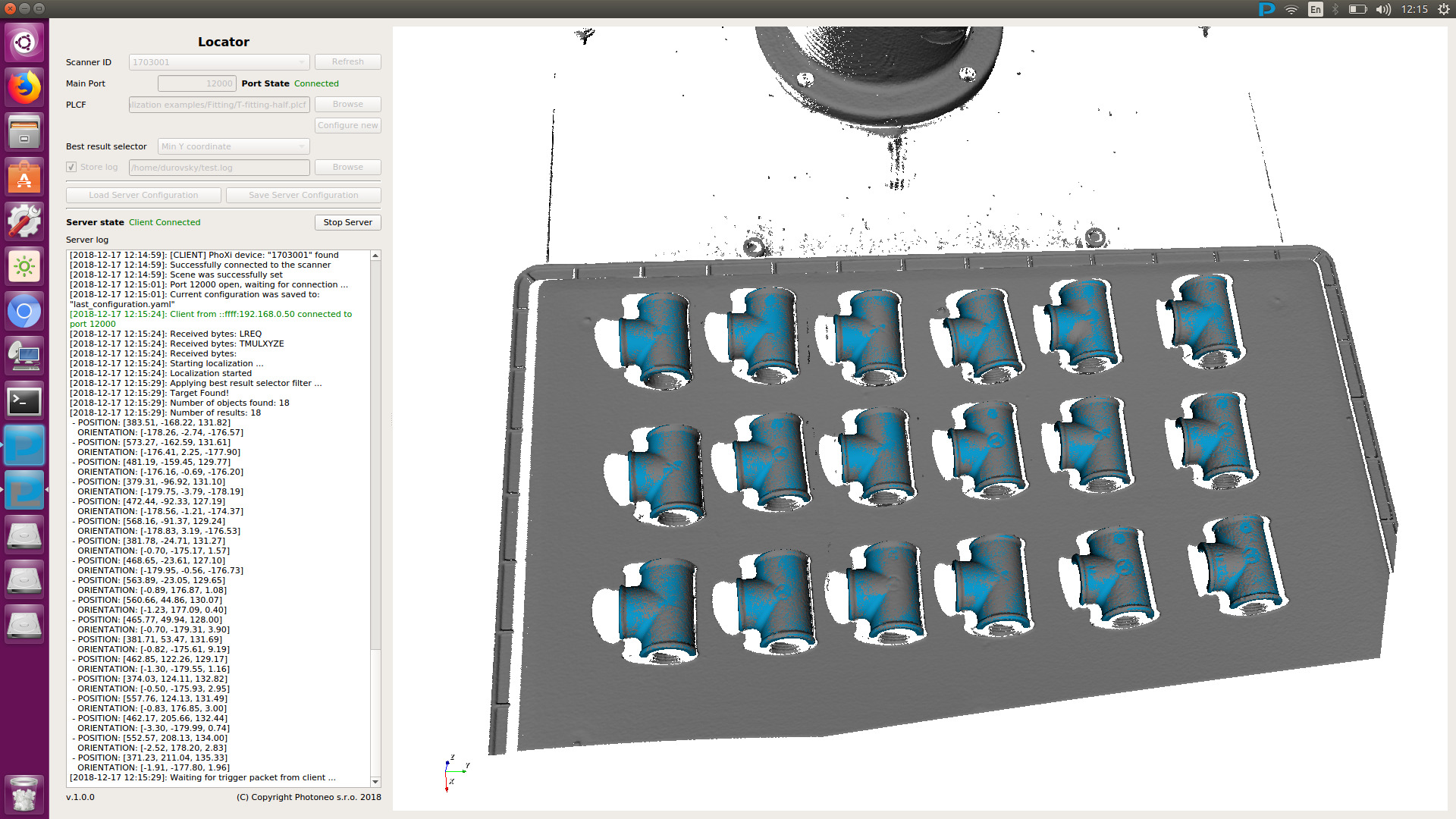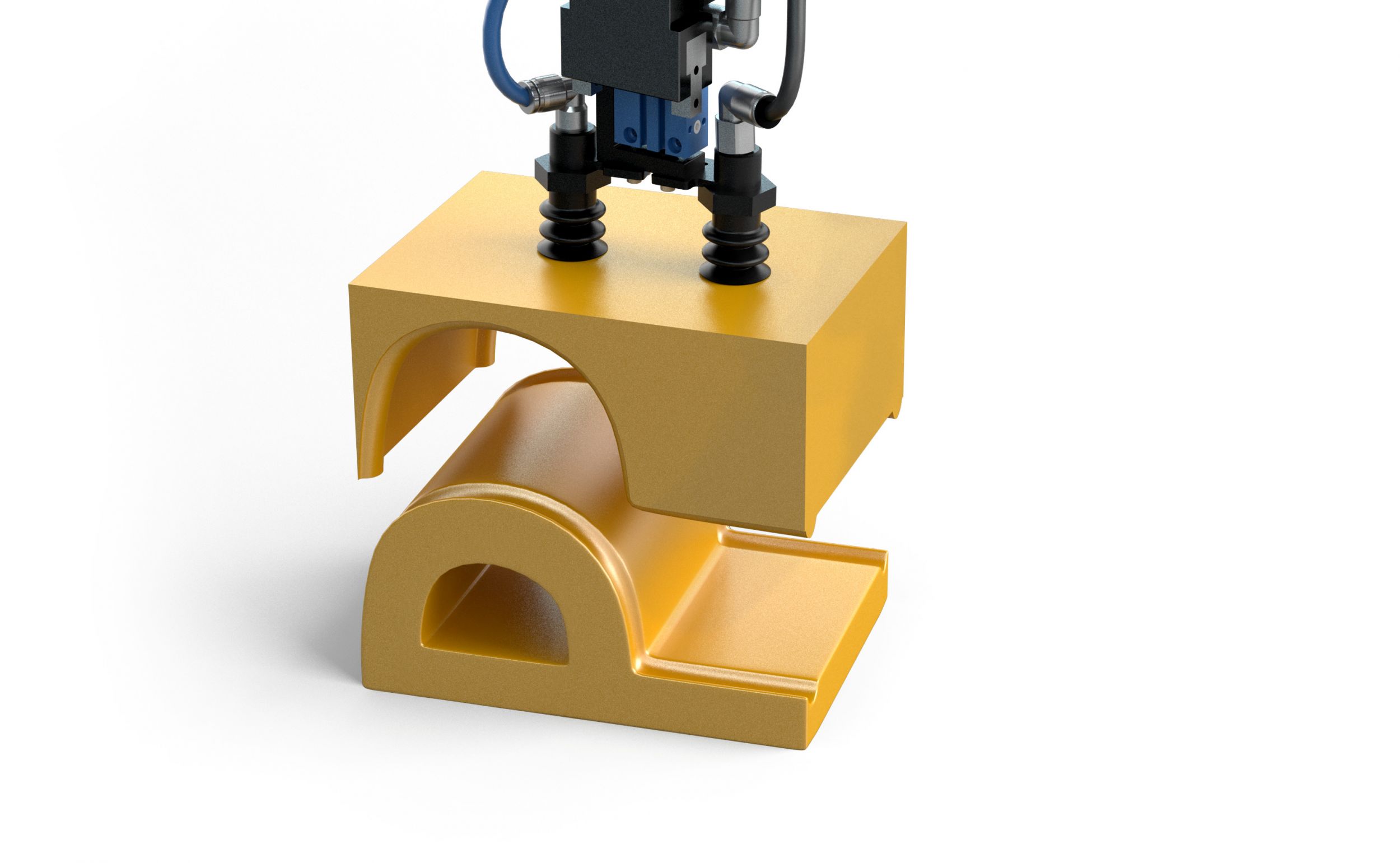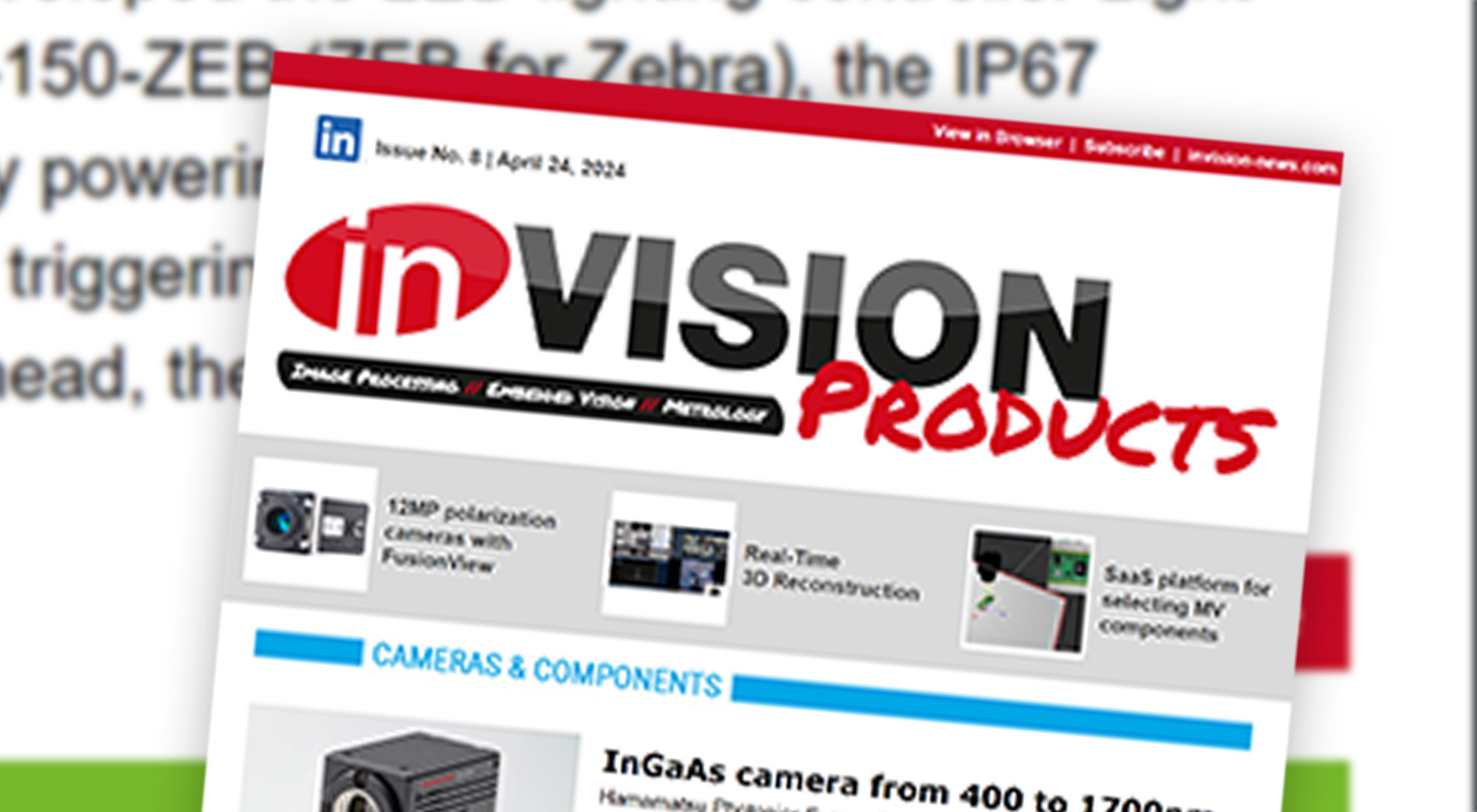Locator
An Affordable Robot-handling Solution
Last year Photoneo announced the release of Bin Picking Studio – a sophisticated yet simple suite ready to take on any bin picking challenge. However, some applications can run with much lighter tools, containing fewer features and a narrower scope of priorities. This was the reason for the development of the Locator tool.

Image 1 | Locator is a powerful tool which can pick non-overlapping objects of various sizes and shapes, and was specifically developed for accurate and fast picking in environments containing fewer obstacles. (Bild: Photoneo)
The Locator is a powerful tool which can pick non-overlapping objects of various sizes and shapes, and was specifically developed for accurate and fast picking in environments containing fewer obstacles. While pick&place had been the core idea behind its development, the Locator is a great solution for assembly and application of glues and sealants as well. The whole cycle consists of several automatic steps. First, the scene is acquired by a 3,2MP PhoXi 3D Scanner which sends data to the PhoXi API, where it’s processed into a point cloud. Photoneo Localization SDK then matches a CAD model of the part with the point cloud, localizes objects of interest in the scene and determines the exact position and orientation of the object in space. The tool uses this data to collate the position and orientation of objects in space. Finally, all the essential data is sent to the robot controller, after which the robot executes a successful approach and grab. The whole part detection, is controlled through the Locator Configurator, which is a standalone QT-based user interface for configuring, controlling, and monitoring the Locator Core, running as a background service. The Core allows to choose from Single and Multiple Result modes. The communication is built on a TCP/IP where the Locator always acts as a server, while all other devices connect as a client, and the socket communication allows integration with a wide range of robot makers, e.g. ABB, Fanuc and Kuka. The key component is a vision controller, an industrial computer which carries the licenses and takes care of the most demanding processes mentioned earlier. The whole experience is seamless and requires little effort on the part of the user. For instance, if someone uses the Locator with an ABB robot, alongside a pre-configured vision controller with the Locator application, the user will receive a Locator ABB Module written in Rapid language. The code is then installed onto the robot controller, enabling a communication channel between the Locator application and the ABB IRC5 system. What about calibration? Photoneo provides a robot-scanner calibration – a software and a sphere which is fixed to the robot arm. The calibration process is very easy and takes a couple of minutes.

Image 2 | While pick&place had been the core idea behind its development, the Locator is a great solution for assembly and application of glues and sealants as well. (Bild: Photoneo)
Summary
Considering the ever-increasing costs of labor, the Locator is an easy, reliable, and cost-efficient solution. In combination with the PhoXi 3D Scanners, it will take on a variety of robot-handling applications. Having successfully integrated with ABB, Fanuc and Kuka robots, Photoneo will be continually adding more robot brands to the list.












